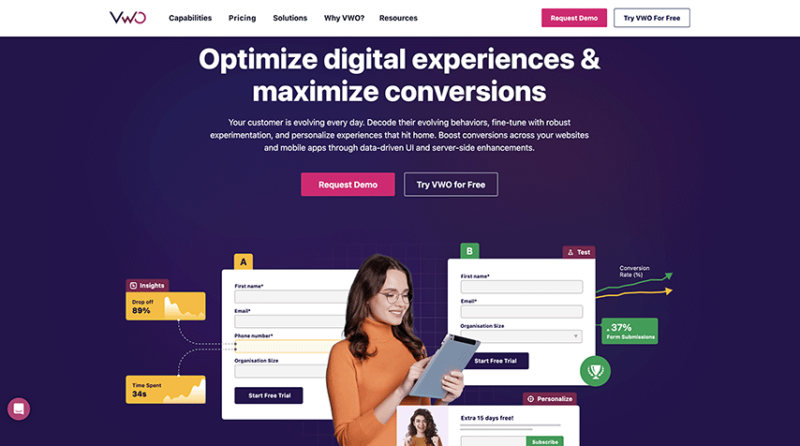Using Behavioral Analytics to Optimize the User Experience

If you don’t understand your audience, how can you possibly market to them successfully?
Clicks, scrolls, bounces — each action is a clue to unravel. And when you gather enough data on how people interact with your site, patterns start to emerge. That’s why digging into behavioral analytics is crucial to optimizing the user experience.
Traditional web analytics tools throw numbers at us, but what do they mean? How do we translate data into decisions? How can we use that data to close the gap between information and action?
That’s the key to creating strategies built on insight rather than guesswork. In this post, we’ll dive into the world of behavioral analytics. Keep reading to learn how to unravel the threads of user interactions, so you can transform raw data into actionable insights.
What is Behavioral Analytics?
With behavioral analytics, we move beyond guesswork and gain concrete insights into how users interact with our websites.
Traditional Web Analytics vs. Behavioral Analytics
Traditional web analytics often feels like looking at the world through a keyhole — it offers basic insights like page views, session lengths, and bounce rates. While helpful, this data tells you what is happening on your site but leaves you guessing why users behave the way they do.
Enter behavioral analytics, which zooms out for a panoramic view, revealing not just what users do, but diving deep into how and why they interact with your site the way they do. Here’s why it’s a game-changer:
- User Journey Mapping: Traditional analytics might tell you that a visitor landed on a page and left, but behavioral analytics shows the full story — the path they took, where they lingered, and what they ignored.
- In-Depth Interaction Insights: While traditional tools give you numbers, behavioral analytics offers context. It tells you why users abandon carts or which content keeps them engaged, turning data into a rich narrative.
- Personalization at Scale: Traditional analytics can segment users into broad categories. Behavioral analytics, however, allows for micro-segmentation based on actual interactions, enabling hyper-personalized experiences that resonate deeply with each visitor.
- Proactive Problem Solving: With traditional analytics, you react to trends. Behavioral analytics equips you to anticipate user needs and address obstacles before they become conversion barriers.
- Enhanced User Experience: Traditional analytics might indicate a drop in page views, but behavioral analytics uncovers why, providing actionable insights to improve design, content, and usability for a superior user experience.
Benefits of Behavioral Analytics
Uncover Visitor Interests and Oversights
Pinpoint exactly what draws your audience in. Position essential content and CTAs strategically across your site to maximize visibility and impact. Behavioral analytics enables you to capture interest and maintain it, trimming away anything that doesn’t serve your audience’s needs or your business goals.
Strengthen Your Funnels
Deep dive into where and why potential customers are dropping off. Understanding these critical junctures allows for targeted interventions to keep users engaged and moving smoothly toward conversion, significantly reducing drop-off rates.
Harness Real-Time Feedback for Agile Adjustments
In-the-moment feedback is a goldmine. It aligns your offerings more closely with what your customers actually want and need. This real-time insight enables you to quickly adapt, refining your services or products to better meet user expectations and market demands.
Cultivate Emotional Connections Through First-Party Data
Beyond the numbers, behavioral analytics helps forge deeper emotional connections with your audience. Insights into the emotional drivers behind user decisions enable you to craft experiences and content that resonate on a more personal level, strengthening loyalty and enhancing user satisfaction.
Drive Data-Driven Website Improvements
Empower your website updates with actionable insights, not assumptions. Behavioral analytics equips you with a solid foundation of data to inform your decisions, ensuring every change you make is targeted and effective. This commitment to data-driven updates fosters a culture of continuous improvement and strategic innovation.
Define Your Audience Segments and Personas First
Need help overcoming sensory adaptation, cutting through the clutter, and reaching your audience?
Build a marketing campaign that is not just successful but legendary. Book a Strategy CallThe Importance of Configuring Filters in Behavioral Analytics
Google Analytics Only Tells You Half the Story
When it comes to increasing conversion rates, Behavioral Analytics can provide indisputable evidence of what’s keeping your users from converting.










